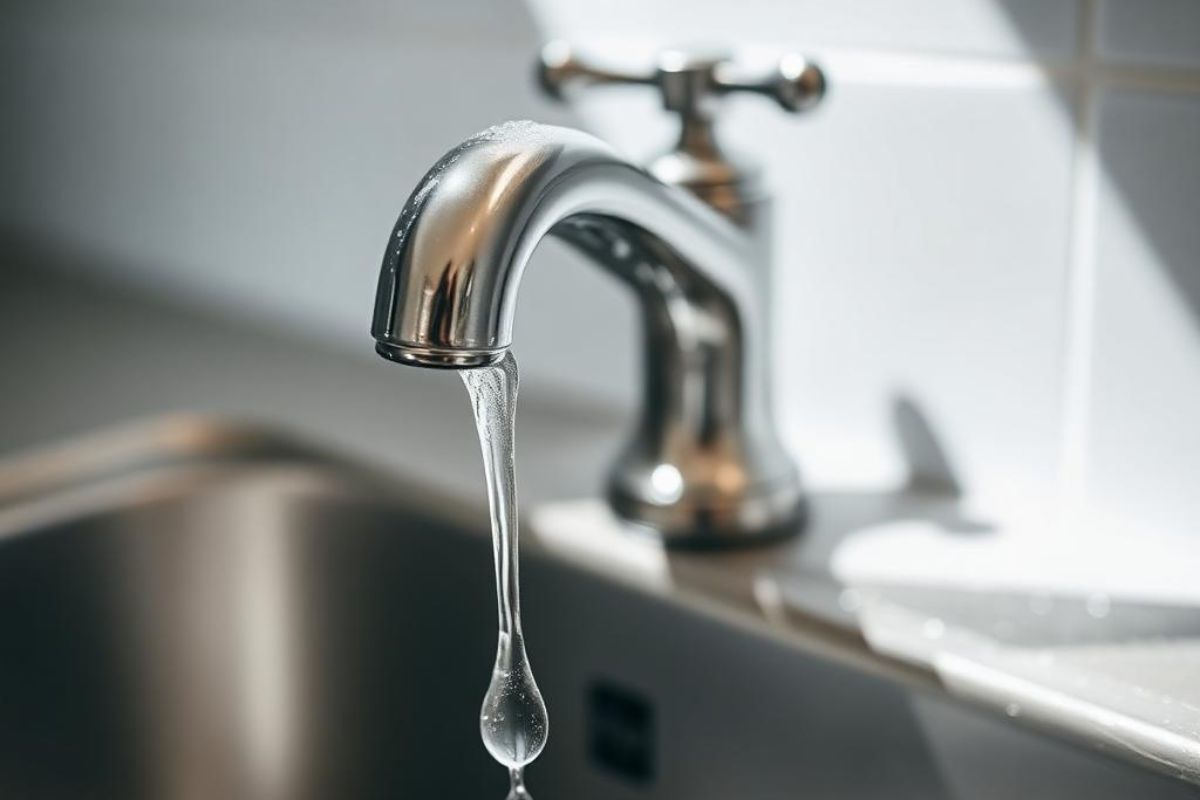A dripping faucet might seem harmless, but it can waste a surprising amount of water over time. Even a slow drip can waste more than 3,000 gallons per year, which adds up to a significant environmental and financial cost. Understanding the scale of this waste highlights why fixing leaks matters.
Many people underestimate how much water is lost from what feels like just a tiny drop. This article breaks down the numbers and explores both the impact on household water bills and broader water conservation efforts.
By knowing how much water a dripping faucet wastes, readers can appreciate why timely repairs are important. It also encourages practical steps to reduce unnecessary water loss at home.
Understanding Dripping Faucet Water Waste
A dripping faucet may seem minor, but it causes measurable water loss that affects households and the environment. Quantifying this waste highlights the importance of timely repairs and professional services, such as those offered by Beaumont plumbers.
How Much Water Does a Dripping Faucet Waste?
A faucet dripping once per second wastes about 3,000 gallons of water annually. This amount varies with drip rate; faster drips increase water loss significantly over time. Even slow leaks add up.
To put it in perspective:
|
Drip Rate |
Water Wasted per Year |
|
1 drip/second |
~3,000 gallons |
|
1 drip/5 seconds |
~600 gallons |
Water wasted from a single faucet can strain household water bills and local resources. The flow might seem small but accumulates quickly.
Real-World Examples of Water Loss
In urban areas like Beaumont, a leaking faucet in a typical home can produce enough waste to fill an average bathtub every month. In multi-family buildings or commercial properties, the total loss can be thousands of gallons monthly.
Professional plumbers in Beaumont often find dripping faucets contributing to higher water bills and potential pipe damage over time. Ignoring these leaks leads to more costly repairs than fixing the faucet immediately.

Environmental and Financial Impact
Leaked water contributes to excess demand on water treatment plants and groundwater sources. This increases energy consumption and environmental strain.
Financially, a dripping faucet can add $20 to $50 or more per year to water bills. The cost of professional repairs, such as those from Beaumont plumbers, is typically much lower than ongoing wasted water expenses.
Promptly addressing leaks reduces utility expenses, conserves resources, and prevents hidden damage to the property’s plumbing system.

Addressing and Preventing Faucet Leaks
Faucet leaks often stem from a few specific issues that can be fixed with targeted actions. A dripping faucet can waste over 3,000 gallons of water annually, significantly increasing water bills and depleting resources. Knowing when to repair a leak yourself or call a professional can save water and prevent further damage. Immediate access to trusted 24-hour emergency plumber services can be critical in urgent situations.
Common Causes of Faucet Drips
Worn-out washers and seals are the leading causes of faucet drips. Over time, these components degrade due to constant water exposure and friction. Corroded valve seats or damaged O-rings also frequently trigger leaks.
Mineral buildup inside the faucet can interfere with valve function, causing persistent dripping. Loose parts or improper installation may worsen existing leaks. Regular maintenance like replacing washers or cleaning aerators helps prevent these issues.
When to Call a Professional
If a dripping faucet persists despite basic fixes, professional assessment is necessary. A plumber can identify hidden problems such as cracked pipes or faulty valves that are not visible to homeowners. Persistent leaks increase water bills and risk water damage.
Emergency situations, including flooding from burst pipes or major leaks, require immediate plumber intervention. Delaying repairs can escalate damages, especially after hours. A specialist can also recommend upgrades or replacements tailored to the plumbing system.
Choosing 24-Hour Emergency Plumber Services
Selecting a 24-hour emergency plumber service involves checking availability, response time, and local reputation. Beaumont plumbers often provide round-the-clock services due to frequent emergency calls in the area. Licensed and insured professionals ensure proper repairs without further risk.
Transparent pricing and clear communication during emergencies improve customer trust. Checking reviews and asking for referrals helps verify the quality of service. Quick access to emergency help minimizes water waste and home damage in critical leaks.
Addressing leaks promptly by replacing worn-out washers or seals can prevent this waste. Regular maintenance and timely repairs not only conserve water but also protect your plumbing system from further damage. Installing water-efficient fixtures can further reduce leaks and promote sustainability in your home.






Share: